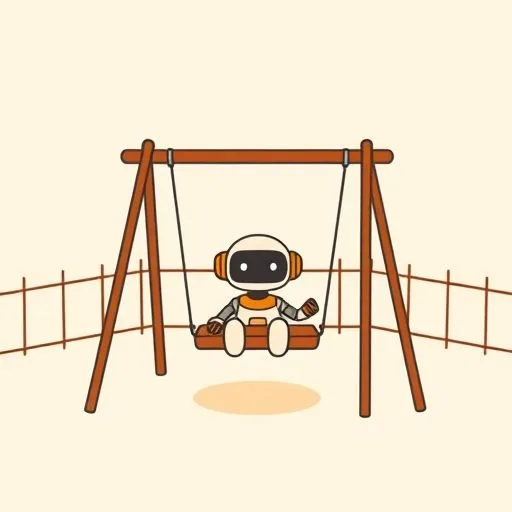
Ever had that heart-in-your-throat moment watching your kid dive into AI? That’s your parenting superpower kicking in—balancing wonder with wisdom.
You’ve seen that moment, haven’t you? When they’re so deep in conversation with a chatbot, eyes wide, fingers flying. Honestly, it’s equal parts amazing and nerve-wracking, right? That’s when you feel it—the quiet tug between wanting to embrace their tech-savvy curiosity and the urge to protect them from the unknowns. It’s your strength, that way you’ve balanced parenting with screens, friendships, and scraped knees. We’re dancing through the age of AI, and it’s bewildering, sure. But here’s what I’ve learned: Our job isn’t to unplug them completely. It’s to walk alongside, holding their hands as we embrace this new frontier together. Let’s explore how to do that.
AI Isn’t All Rainbows—But It’s Not All Rainclouds, Either

That quiet strength we all have? When we pause before saying ‘No,’ to let them explore a little? It’s the same with AI. We’ve watched them troubleshoot with Alexa for homework help or laugh at ChatGPT’s goofy jokes.
But here’s the thing: Tech isn’t a replacement—it’s a sidekick. Like a parent at the playground, we’re setting boundaries. And that balance starts with understanding both the magic and the limits—just like we do with screen time.
We can start with family agreements on when to use AI (like cooking or brainstorming stories) and when to step back (like bedtime chats or family time). It’s about discovering those magic moments where tech actually brings us closer, enhancing rather than replacing the real moments we cherish.
8 Safety Tools That Feel Like Tech-Safety Blankets

We’ve all been there. Late at night, scrolling, wondering if that app is truly safe. Here’s a dad’s toolkit: First, the privacy settings. Dig into the parental controls—not just by age, but by what your child’s ready for.
Second, look for AI companions that can be transparent (like ChatGPT explaining its limitations to kids). Third, the ‘AI is All Around You’ scavenger hunt—a game where you spot AI tools together (like car navigation apps or smart home devices). It demystifies things, making it less scary.
And fourth? Regular check-ins. You know, those car rides home where you ask, ‘What fun thing did you learn about AI today?’ It’s not about interrogation—it’s about connection. Small steps. They’re our safety net.
AI Tools That Can Co-Parent Without Overstepping
When we’re overwhelmed—AI tools can be a lifeline. Like ChatGPT for crafting bedtime stories (with your unique twists) or Gemini for homework hints. But here’s the key: We’re still the ones curating the content.
Show them how to use AI responsibly. Together, we can ask: ‘Why is this answer trustworthy?’ or ‘How can we verify it?’ It’s about teaching them to think critically, not blindly follow instructions.
And that’s your quiet strength—guiding the process, not policing it. Because when they internalize the ‘why,’ they’ll carry that wisdom beyond the digital world.
When Playgrounds Become Digital Worlds: How to Set Boundaries

Playgrounds have rules. So do we. We’ve watched them laugh at the monkey bars, waiting for their turn. Apply that same care to the digital playground.
For example, we can use AI to create ‘family time’—like animating homemade stories together. But when kids are using AI alone, set clear boundaries, like the ‘Ask Three Before You Click’ rule: Check with your gut, a parent, and then a trusted adult. It’s a safe way to explore.
And when they’re curious about chatbots? It’s your moment to pause and say, ‘Let’s explore together first.’ It’s your hand on the shoulder, guiding them through the virtual maze.
Building Trust: That Quiet Strength You’ve Always Had

We’ve always taught them to trust the kindness of strangers. Now, AI challenges that trust. But here’s your secret weapon: You’ve already built trust with them. When they know you’ll walk alongside them—even when they’re curious about tech—it creates a safe space.
It’s your quiet strength, the way you didn’t freak out when they asked for their first phone. Instead, you showed them how to navigate it. So when AI’s involved, model the behavior you want to see. Search for answers together.
Because at the end of the day, we’re not raising perfect kids—we’re raising humans ready to navigate an imperfect world. And that trust, that quiet strength you model every day? It’s their armor against the AI unknowns.
When you’re unsure, say, ‘Let’s see what we find out together.’ It’s not about having all the answers—it’s about showing them how to navigate unknowns. Together.
And the best part? You’re already doing it.
Source: Private AI takes root as enterprises demand open-source consistency, Silicon Angle, 2025-09-30
